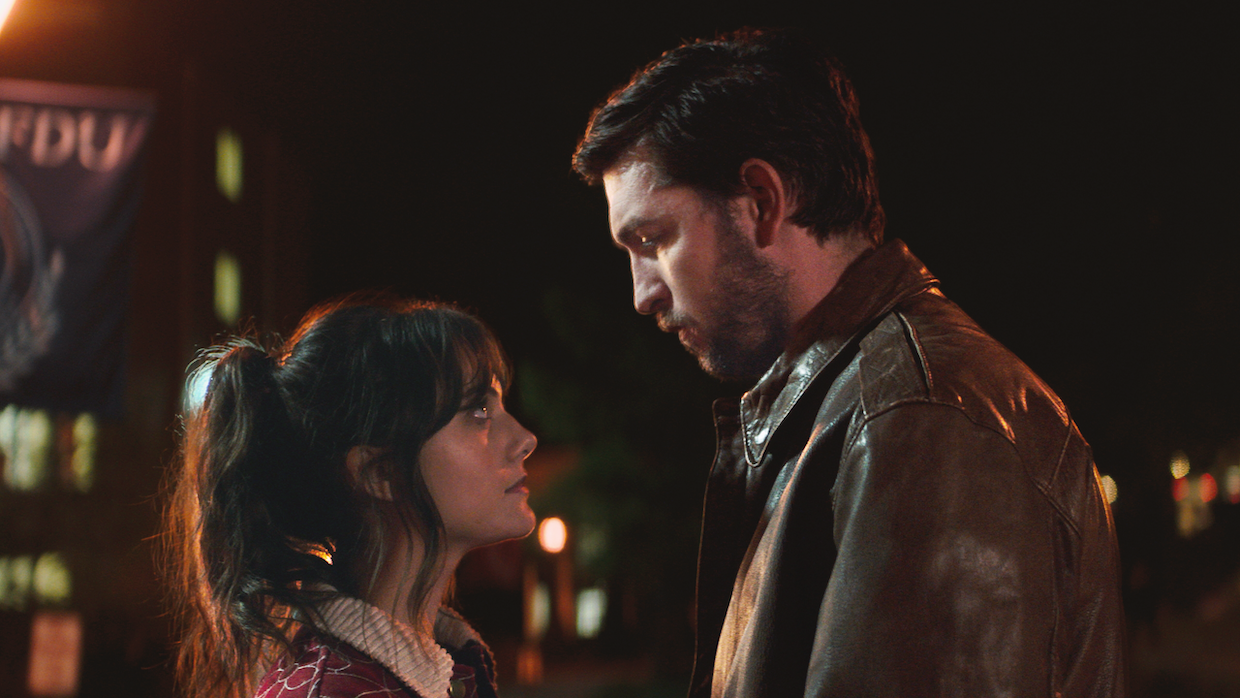 Back to selection
Back to selection
“The Tonal Balance Was a Bit of a Tightrope”: Editor Jacob Craycroft on Cat Person
 Emilia Jones and Nicholas Braun in Cat Person
Emilia Jones and Nicholas Braun in Cat Person Cat Person, the viral short story that originally appeared in The New Yorker is now a feature film from director Susanna Fogel. Editor Jacob Craycroft tells Filmmaker about bringing the re-imagined feminist cautionary tale to life in the cutting room.
See all responses to our annual Sundance editor interviews here.
Filmmaker: How and why did you wind up being the editor of your film? What were the factors and attributes that led to your being hired for this job?
Craycroft: As with most of my jobs that aren’t with repeat filmmakers, this came through my agent. I had read the short story and the script, and I really liked Susanna Fogel’s take on what the film should be. We hit it off in our first Zoom meeting and had a really fun time putting the film together.
Filmmaker: In terms of advancing your film from its earliest assembly to your final cut, what were goals as an editor? What elements of the film did you want to enhance, or preserve, or tease out or totally reshape?
Craycroft: I am always trying to bring the director’s vision to life, particularly before we’ve had a chance to sit together and work together. As with the short story, the devil was in the details. Cat Person is a film that sort of lies between genres. There are “rom-com” nods, and there are moments of “horror” — the psychological thrills of the everyday quest for human connection. The film is very much from the female perspective, but we didn’t want the film to be one-sided. We wanted to embrace the nuance, to embrace the awkwardness, and to embrace the anxiety.
Filmmaker: How did you achieve these goals? What types of editing techniques, or processes, or feedback screenings allowed this work to occur?
Craycroft: In the early days we were using a lot of temp scores by Wendy Carlos from The Shining to tease out the eerie vibes. Eventually [Composer] Heather McIntosh made a lovely score that had a better emotional balance, particularly in contrast to the very “male” needle drop songs.
Filmmaker: As an editor, how did you come up in the business, and what influences have affected your work?
Craycroft: I moved to LA right after college and was lucky to end up working as an assistant editor for Dody Dorn on her first feature, as she moved from sound editor to picture editor. That film was Floundering and culminated in my first visit to Sundance in 1994. A few years later I moved back to New York, working under Geraldine Peroni. Both of them were great mentors as I moved back and forth from assisting to editing shorts and low budget features. My first official Sundance film that I edited was Broken Lizard’s Super Troopers. I worked with Robert Altman on two projects and felt very at home, both stylistically and with the great people he had working with him.
Filmmaker: What editing system did you use, and why?
Craycroft: We used Avid because I think it is the most robust workhorse out there and still has the best media management. This was my first job back in an office with a director since lock-down. It was nice not to be editing remotely. I had missed the immediacy of being in the room with someone and the ability to bounce ideas and just chat without a digital intermediary. Also, I missed having a lunch buddy. My assistant was still largely remote, but was able to come into the office on occasion, which was particularly helpful as we neared picture lock.
Filmmaker: What was the most difficult scene to cut and why? And how did you do it?
Craycroft: Two come to mind: the sex scene and the argument at the end. As with much of the film, the tonal balance was a bit of a tightrope. Those two scenes were probably the trickiest.
Filmmaker: Finally, now that the process is over, what new meanings has the film taken on for you? What did you discover in the footage that you might not have seen initially, and how does your final understanding of the film differ from the understanding that you began with?
Craycroft: I think that we always had a clear narrative goal. The journey of cutting the film was really about finding the nuance in the lead performances. How do you make a relationship that is, at times so obviously wrong, feel true? We needed to feel like there is a thread of a real connection from which our leads are trying to build. We are all trying to make real personal connections but are too often afraid to step out from behind the digital walls. And then when we do step out, there is that anxiety of it all going to shit that keeps us from truly being honest with each other before it is too late.
